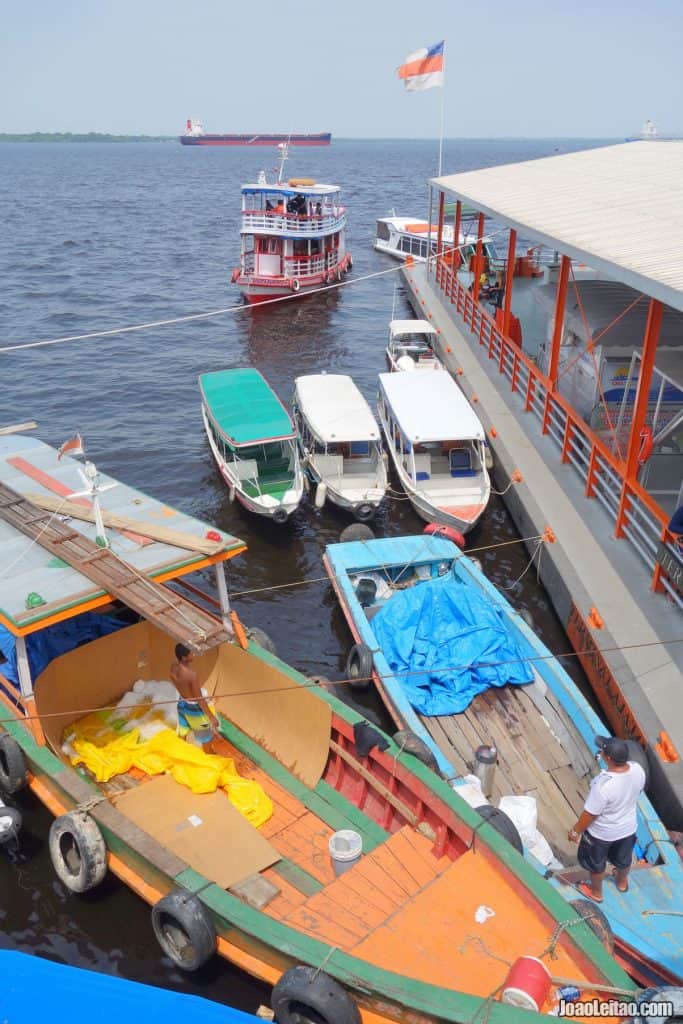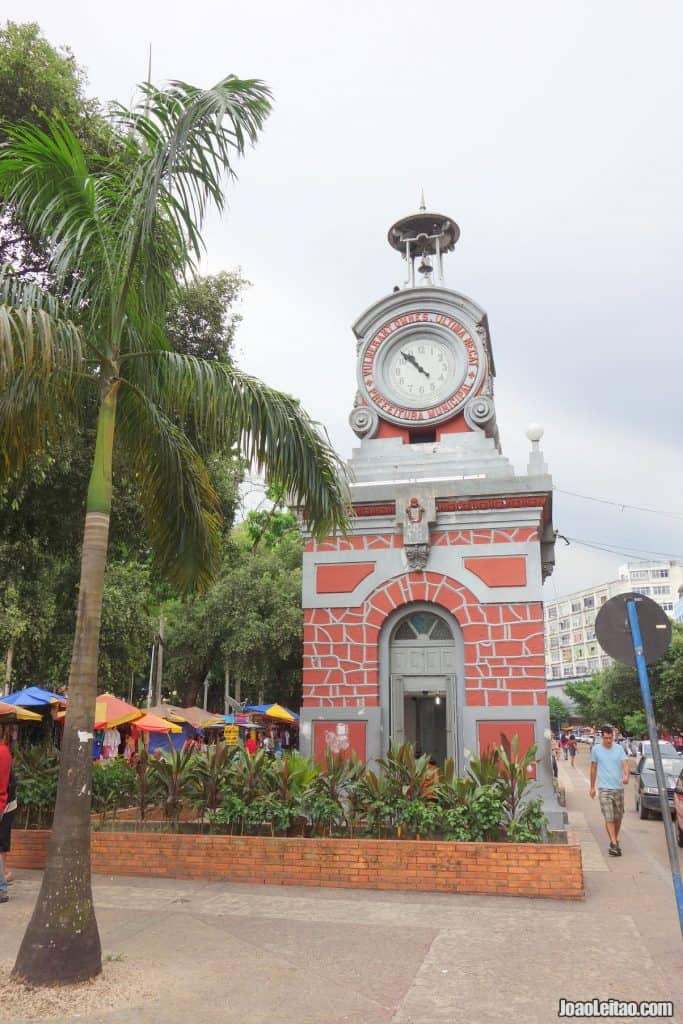Table of Contents
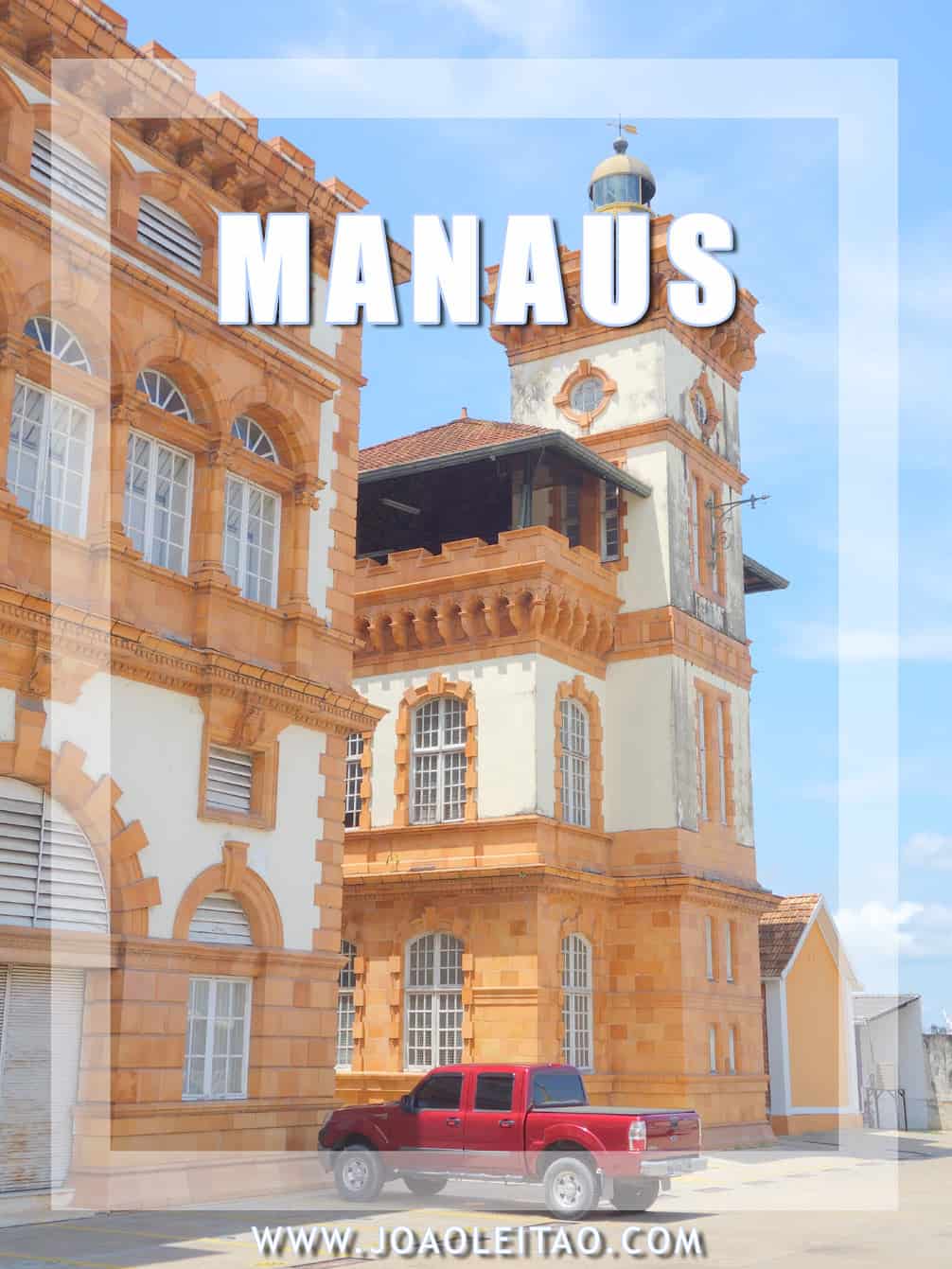
Manaus is the capital city of the Amazon. With two million people, beautiful early 1900s architecture, and a lively streets and port, Manaus is an ultimate Brazilian city in the heart of the Amazon.
I loved spending two weeks in the “Paris of the Tropics.” I had the opportunity to explore and deeply connect with the city.
Traveling to Brazil and not traveling to Manaus is like missing out on an essential part of the Brazilian culture. The rest of the Brazilian people often overlook the Amazon but that’s essential in the country’s culture and economy.
On this page, I share with you a practical city guide with the best places to visit in Manaus.
Manaus Brazil: What you need to know
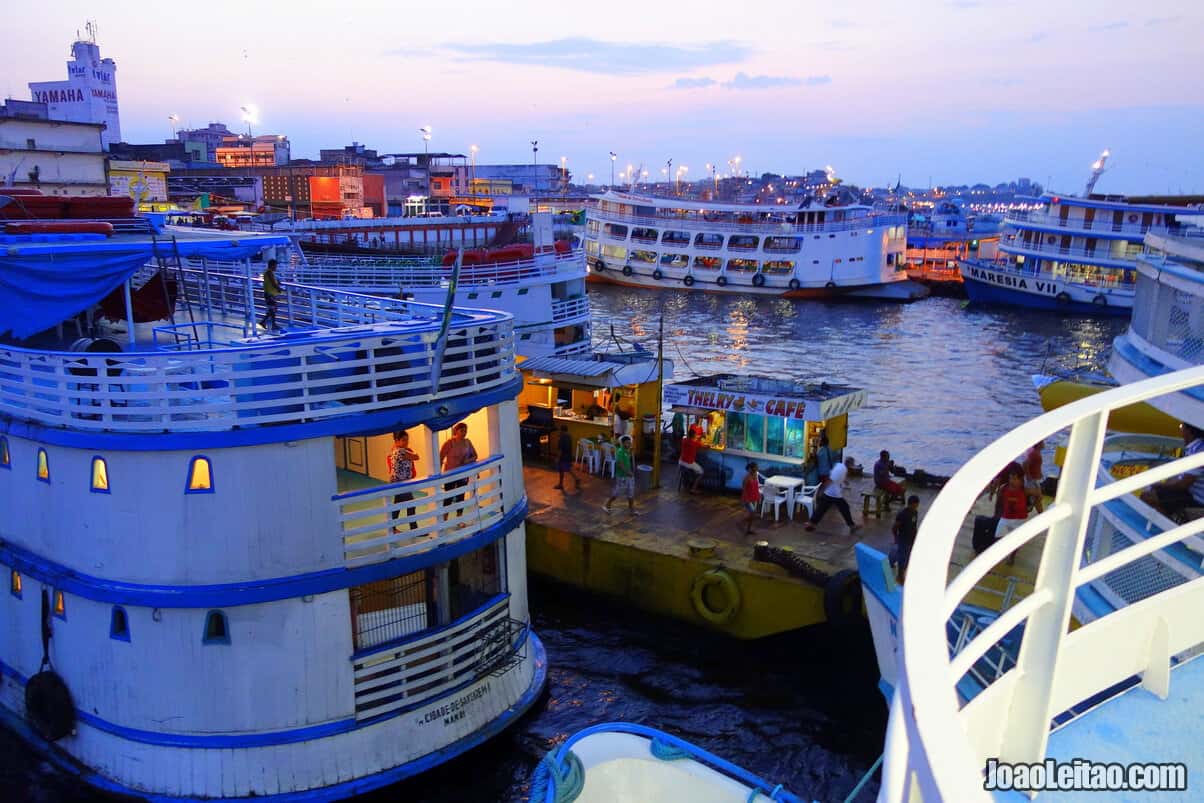
Manaus is the biggest city in the Amazon and the state capital, with about 1.8 million people.
There is something surreal about Manaus:
- Maybe it’s how massive it is in the middle of nowhere surrounded by endless tropical jungle.
- Or maybe it’s the port, 1,500 km from the Atlantic, welcoming ocean ships.
For travelers, it’s an excellent base to explore the region and a place to recharge after the exhausting trips in the Amazon. It’s also a popular pitstop for people traveling the whole of the Amazon river.
Besides, there’s a lot of historical and cultural heritage to see, most of it from the golden age of Manaus between the end of the 19th century and the beginning of the 20th century. That was the time of substantial economic growth thanks to the rubber industry.
I arrived in Manaus coming from Oriximiná. After staying for a few days, I took a bus up to visit Venezuela via Boa Vista.
After returning to Manaus, I stayed with a family of the Tatuyo tribe in the jungle. It was an incredible experience that I’ll always remember.
Later I took the boat to Benjamin Constant to cross the border with Colombia in Tabatinga / Letícia. My Amazon boat trip was unforgettable.
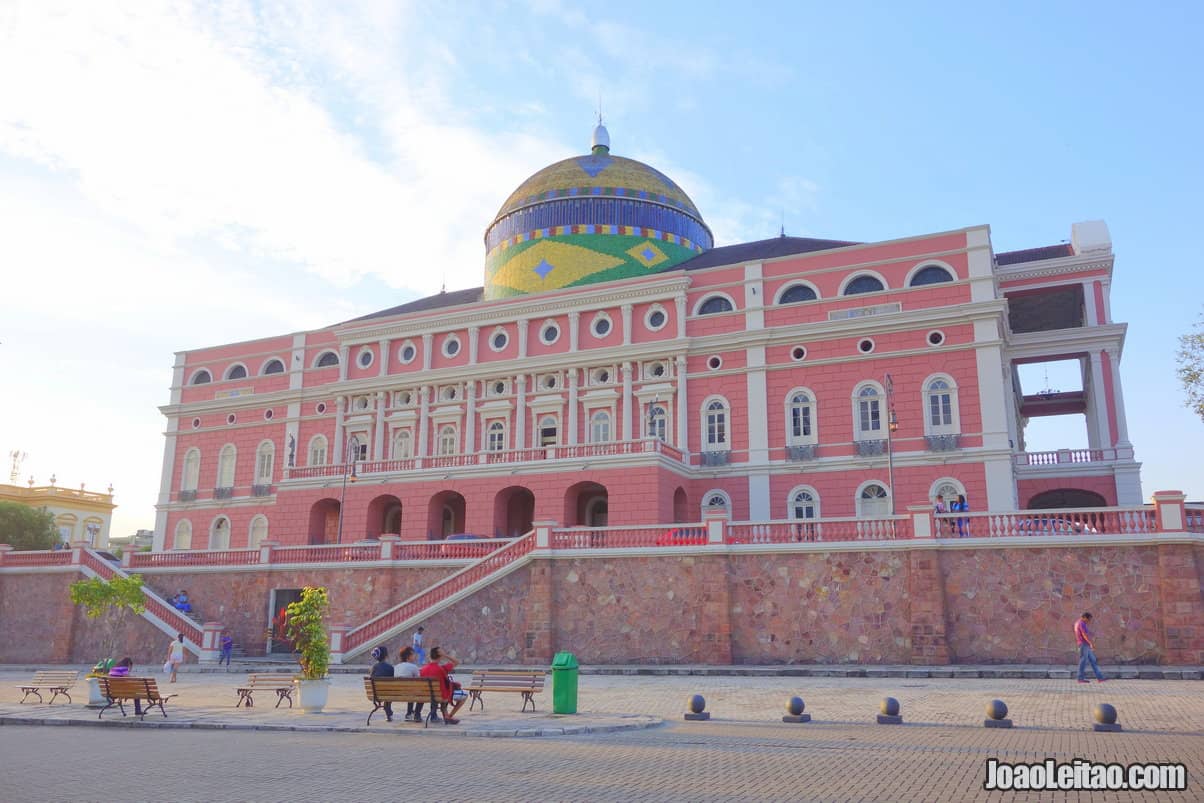
Best time to go to Manaus
In order to know the best time to go to Manaus, gather all the necessary information about the seasons and the best weather. The best time for holidays in Manaus is in July when temperatures are milder, and it doesn’t
It’s best if you travel to Manaus out of the hotter months of August, September, October, and November. I traveled there in the summer and it was really hot and humid, and not everyone enjoys high temperatures like I do. The rainy season is in February, March, and April.
Top things to do in Manaus
What to visit in Manaus.
- Amazon Theater
- Meeting of Waters
- Benjamin Constant metallic bridge
- Rio Negro Palace
- Ponta Negra Beach
- Adolpho Lisboa Municipal Market
- Port of Manaus
- Palace of Justice
- Botanical Garden
- Palacete Provincial
- Museum of the Amazon
- Largo De São Sebastião (São Sebastião Square)
- Manaus Customs House
- Metropolitan Cathedral of Manaus
- São Sebastião Church
- Fish Market
- Praça da Saudade (Saudade Square)
- Praça do Relógio (Relógio Square)
Map of attractions in Manaus
Map with the most popular attractions in Manaus.
Quick travel tips to visit Manaus
- Get your Manaus airport transfer in advance.
- Wake up early and be the first at monuments, museums, or other landmarks.
- Check the schedule for the Amazon Theater and buy a ticket to see a show.
- Well located 3-star Hotel Saint Paul will give you a double room with breakfast for about 37 Euros per night.
- Also in the city center and for a budget type of accommodation, try the Hostel Manaus where you can get a bed in a shared dormitory room and breakfast for about 11 Euros per night.
- Go on a guided tour of the Amazon Theater. It really changed my perception of the historical importance of this iconic building. You can get the ticket directly at the entrance.
- Only one day to explore the Amazon? Go on the full-day tour on the Amazon River from Manaus.
- Before you go don’t forget to check the weather in Manaus.
- Although there are hostels for backpackers in Manaus, there are also hotels with private rooms and breakfast included that is cheaper or cost the same as hostels.
- Take a 3-Hour Manaus City Tour.
- Take care of your belongings.
- If you are in a hurry and don’t have time to ask around for boats going to Belém, you might consider the 5-day Manaus to Belém by Boat ticket. A bit more expensive, but you’ll have it beforehand.
- If you like animals you might consider taking the Amazon Dolphins Day Tour.
- Even if you’ve done it in other cities, you’ll have to see the Encontro das Águas (Manaus Meeting of Waters).
- I spent several days in the jungle with a native tribe, 80 km from Manaus. You should try to make the 4-Day Amazon Jungle Adventure and visit a local village and spend time with an indigenous family.
- If you want to try something different, go on an Amazon River 2-hour stand-up paddling activity.
- To know the best time to visit Manaus, you need to gather detailed information about its seasons and climate.
Carmina Burana in Amazon Theater
I was lucky to see the opera Carmina Burana at the Amazon Theater. One of the classical music’s most popular operas, Carmina Burana is the most famous piece of German composer Carl Orff.
Best places to visit in Manaus
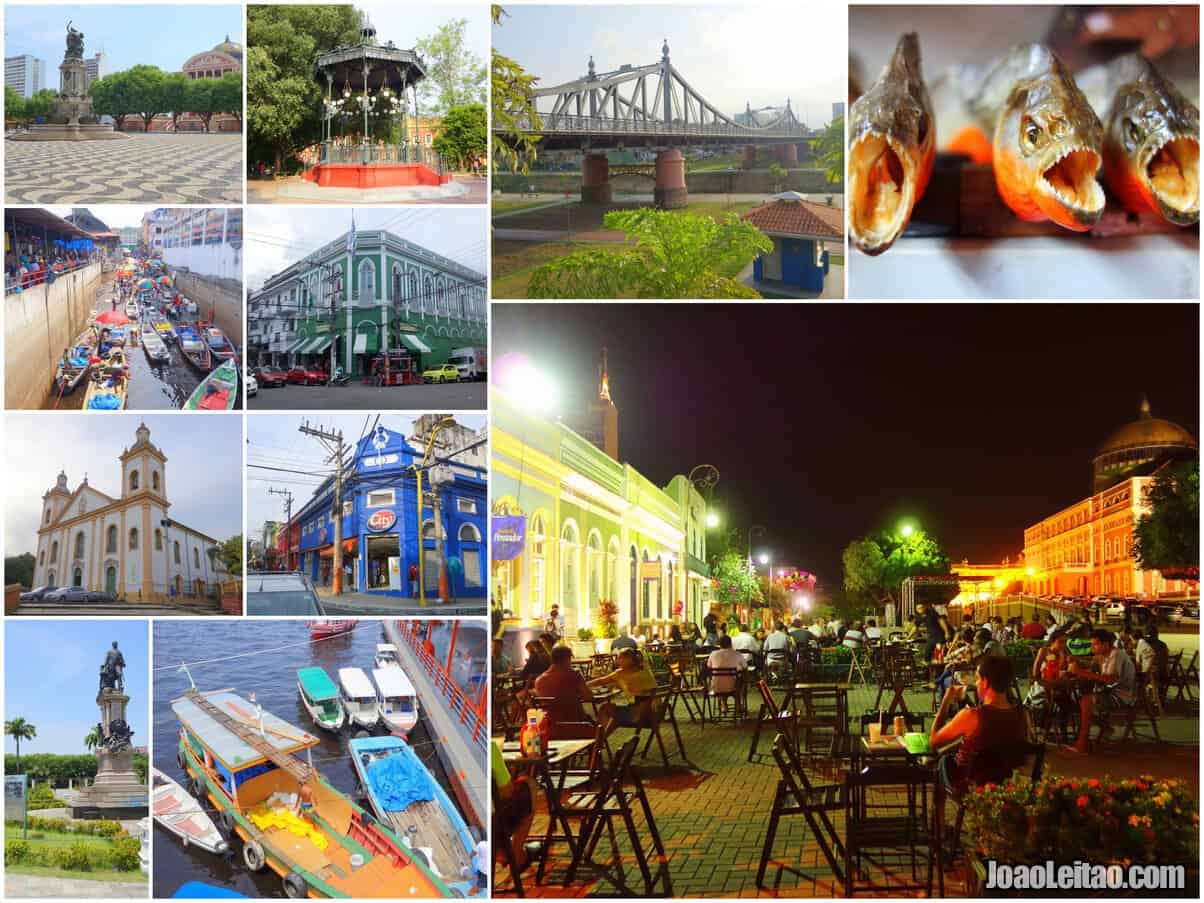
If you want to know what to see in Manaus, I organized a list of places to visit so that you can plan your trip and maximize your time during your holidays.
Top 9 places to visit in Manaus.
1. Amazon Theater
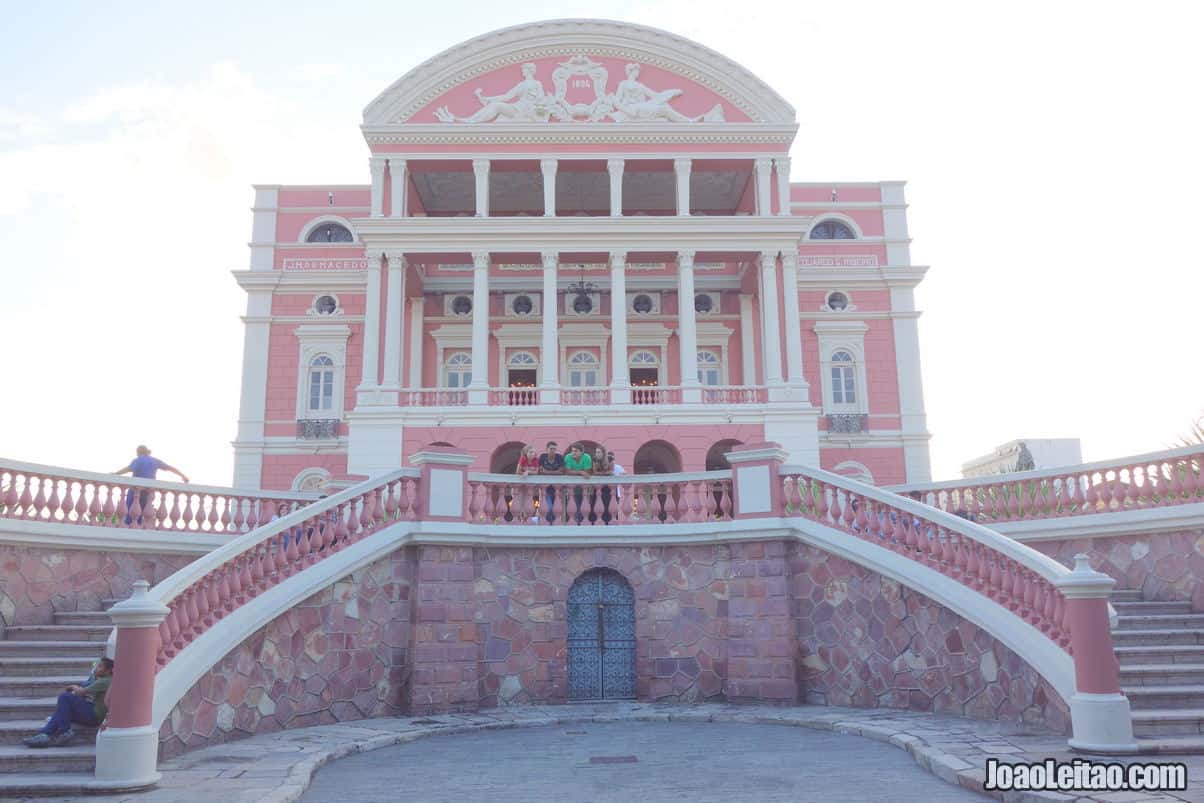
The Amazon Theater immediately stands out for its unexpected opulence and splendor. When construction began, in 1884, there was no shortage of funds, thanks to the then lucrative rubber industry. And the high-class in Manaus aspired to the same cosmopolitan lifestyle of the big cities.
Italian architect Celestial Arcadim supervised the construction work, and nothing was too much for the building: roofs from Alsace, furniture from Paris, marble imported from Italy, and iron from England.
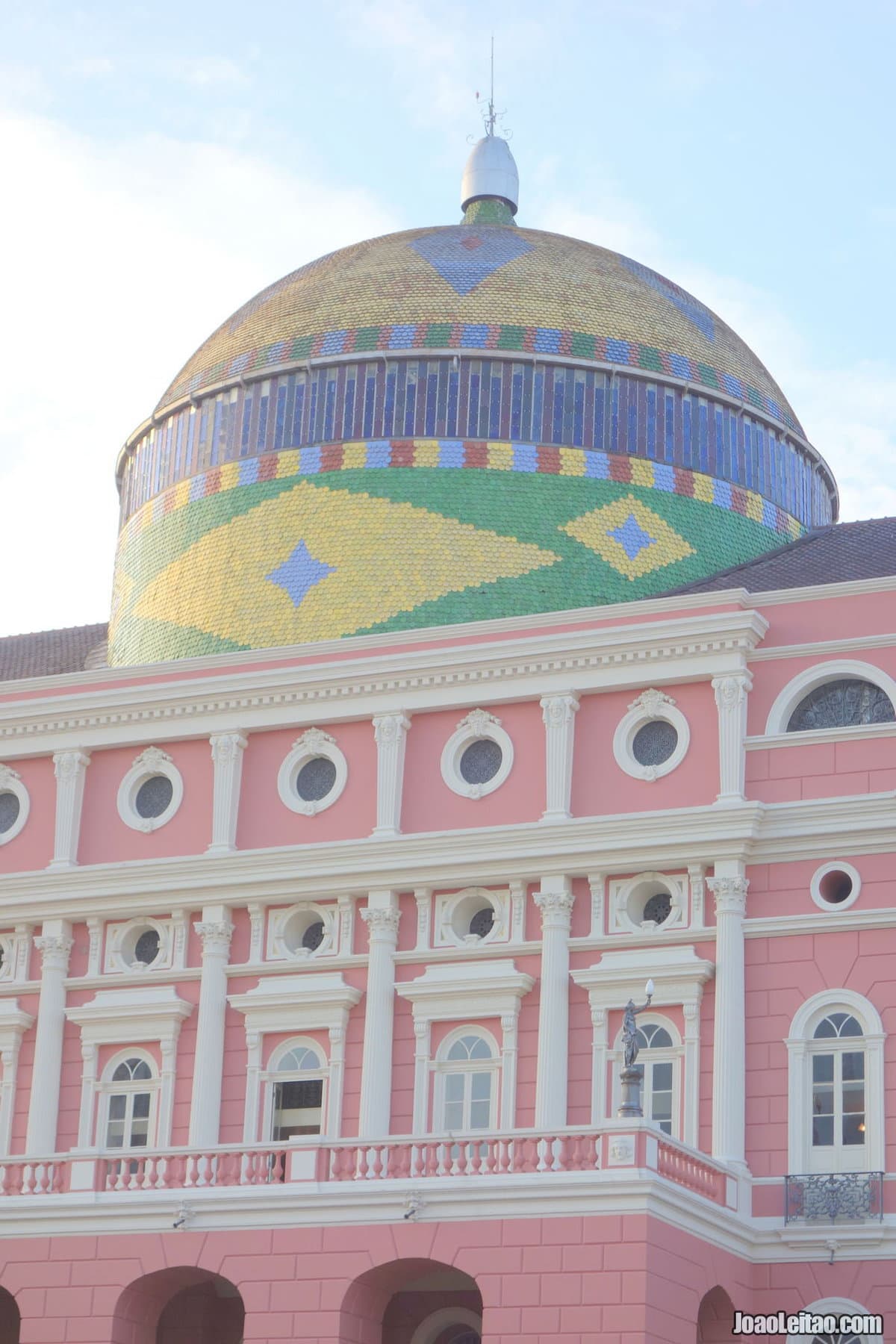
The magnificent dome was covered on the outside with 36,000 mosaics in the colors of the Brazilian flag. The theater opened on 7 January 1897 with one of the most prestigious opera singers at the time Enrique Caruso. Nowadays, after complete abandonment for 90 years, the theater is active again thanks to government funds.
Also read: Manaus’s opulent Amazon Theatre
2. Encontro das Águas (Meeting of Waters)
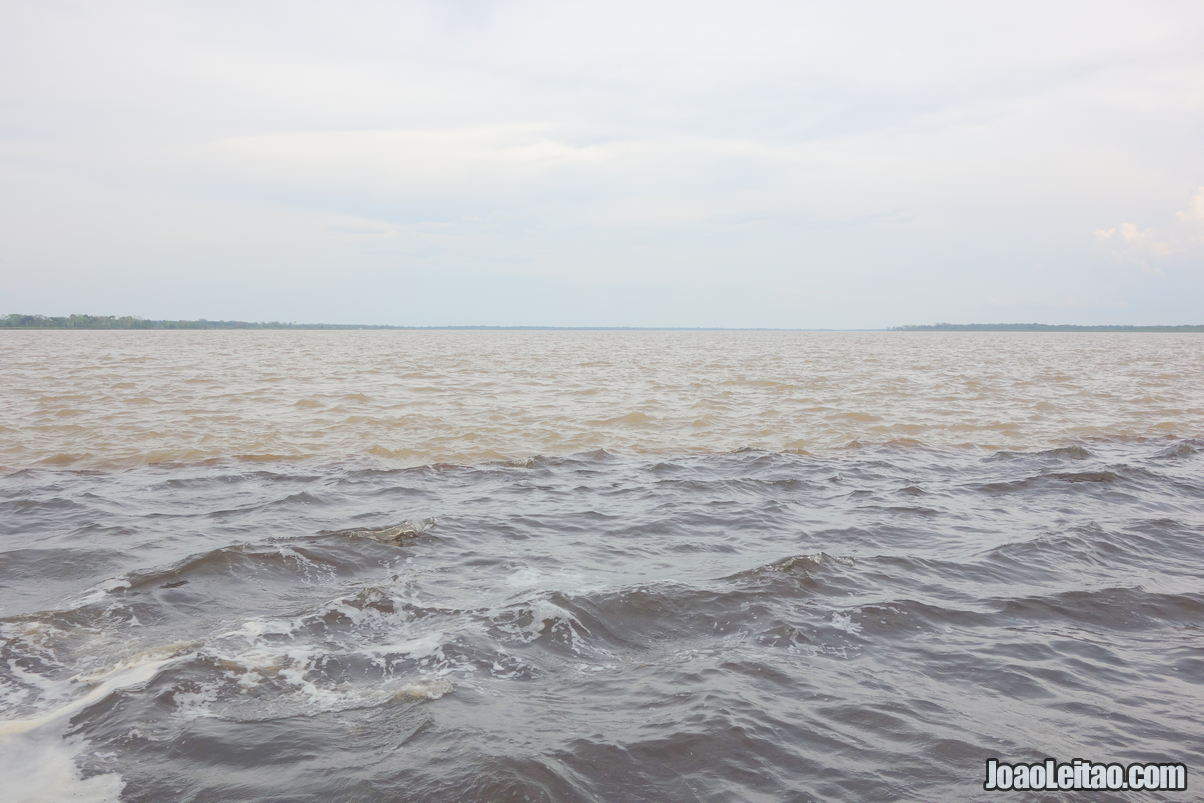
The Meeting of Waters is a common natural phenomenon in different parts of Brazil. It’s the merging of two distinct rivers that results in the mix of waters different from one another in density, temperature, and color. In Manaus, that happens with rivers Negro and Solimões, and it’s by far the most spectacular Meeting of Waters in the country.
The best way to see it is by flying over it, but if you can’t do it, you can go to a viewpoint called Mirante da Embratel, at the Colônia Antônio Aleixo neighborhood, on the east side of Manaus. Unfortunately, currents are strong here so don’t make any attempts to swim and feel the differences between both waters. If you go by on a boat, you can always feel the clear differences between the two by dipping your hand in the water. The best time to see this phenomenon is in June and July.
3. Benjamin Constant Bridge
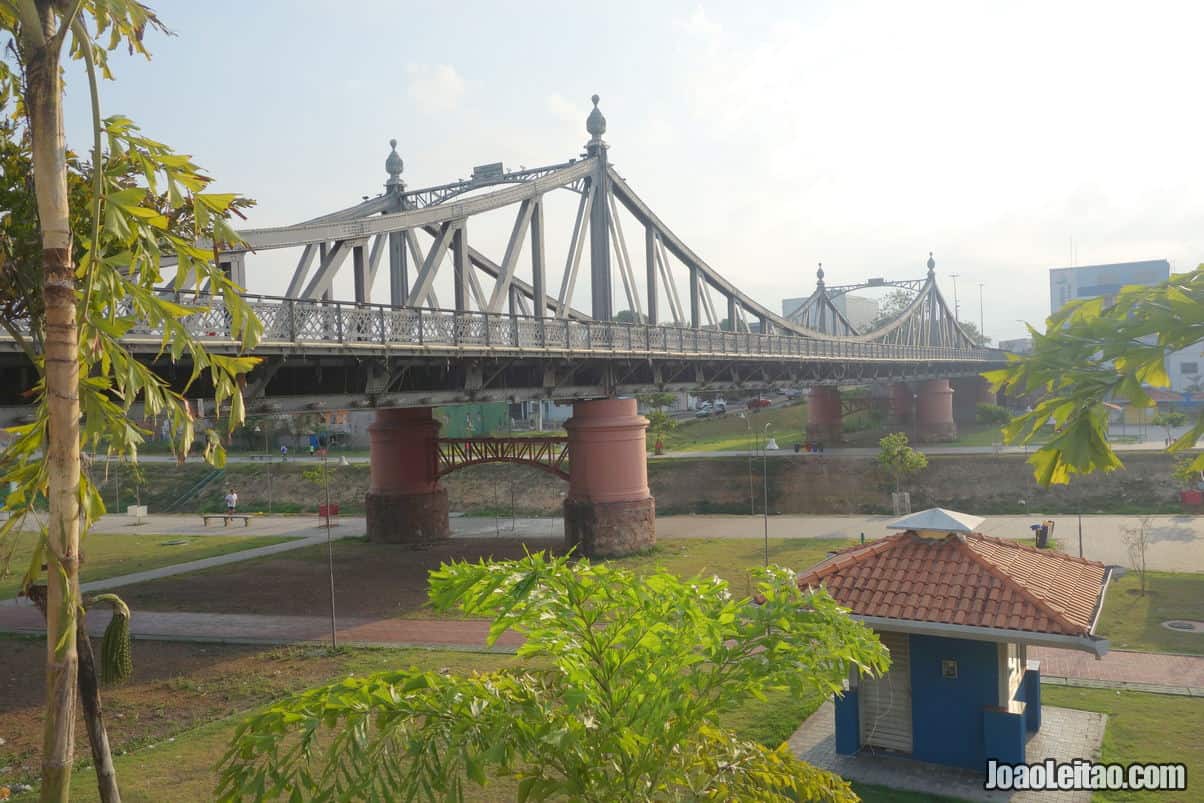
This suspended bridge was inaugurated in 1895, built under the supervision of engineer Frank Hirst
It’s also known as Third Bridge, Metallic Bridge, or Ponte da Cachoeirinha (Cachoeirinha Bridge). It’s 161 meters long and 10.5 meters wide and connects the city center to the Cachoeirinha neighborhood. It was rebuilt in 1938 and underwent maintenance work in 1969, 1987, and 2008.
4. Rio Negro Palace
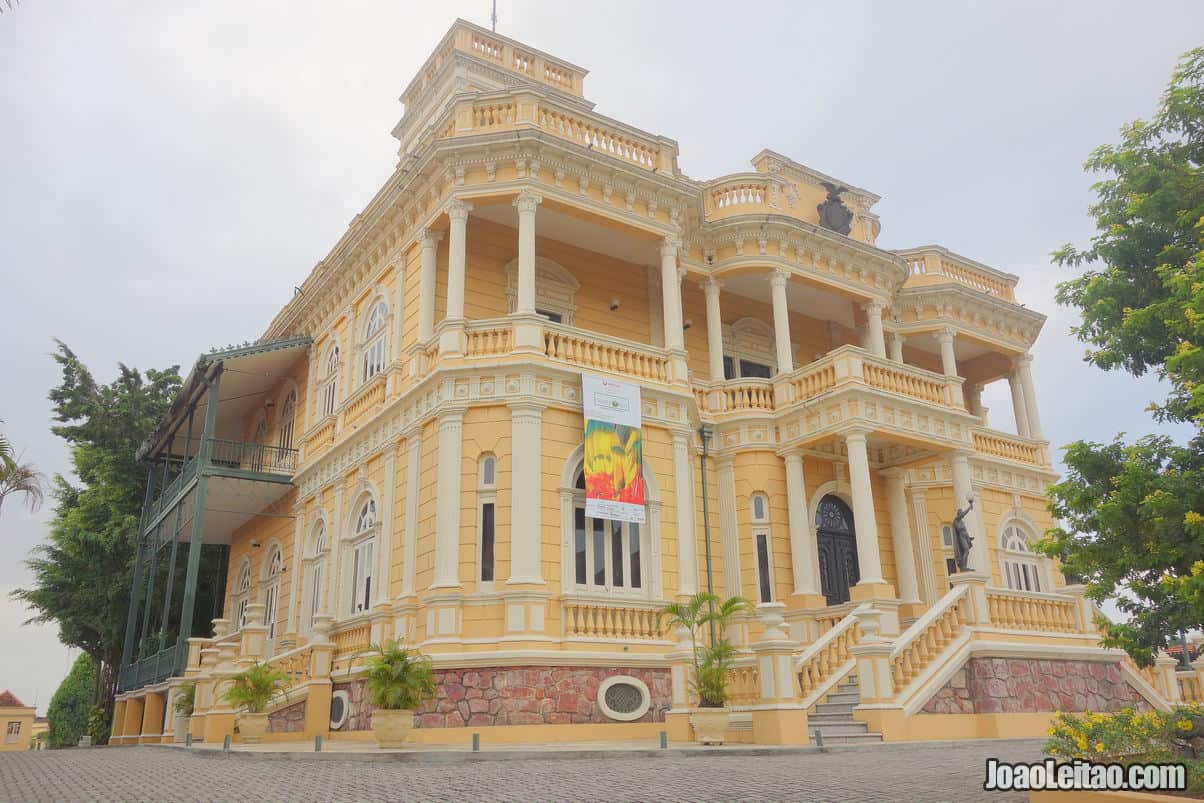
This eclectic-style palace was designed by Italian architect Antonio Jannuzzi and built between 1903 and 1910. It was the home of Karl Waldemar Scholz, a wealthy rubber merchant
The industry’s decline and the First World War ruined the Scholz family, and the government took over the palace, using it as the headquarters of the Government of the State of Manaus from 1918 to 1995. Since then, the Palace has been a cultural center and houses a museum dedicated to culture and the rubber trade
5. Adolpho Lisboa Municipal Market
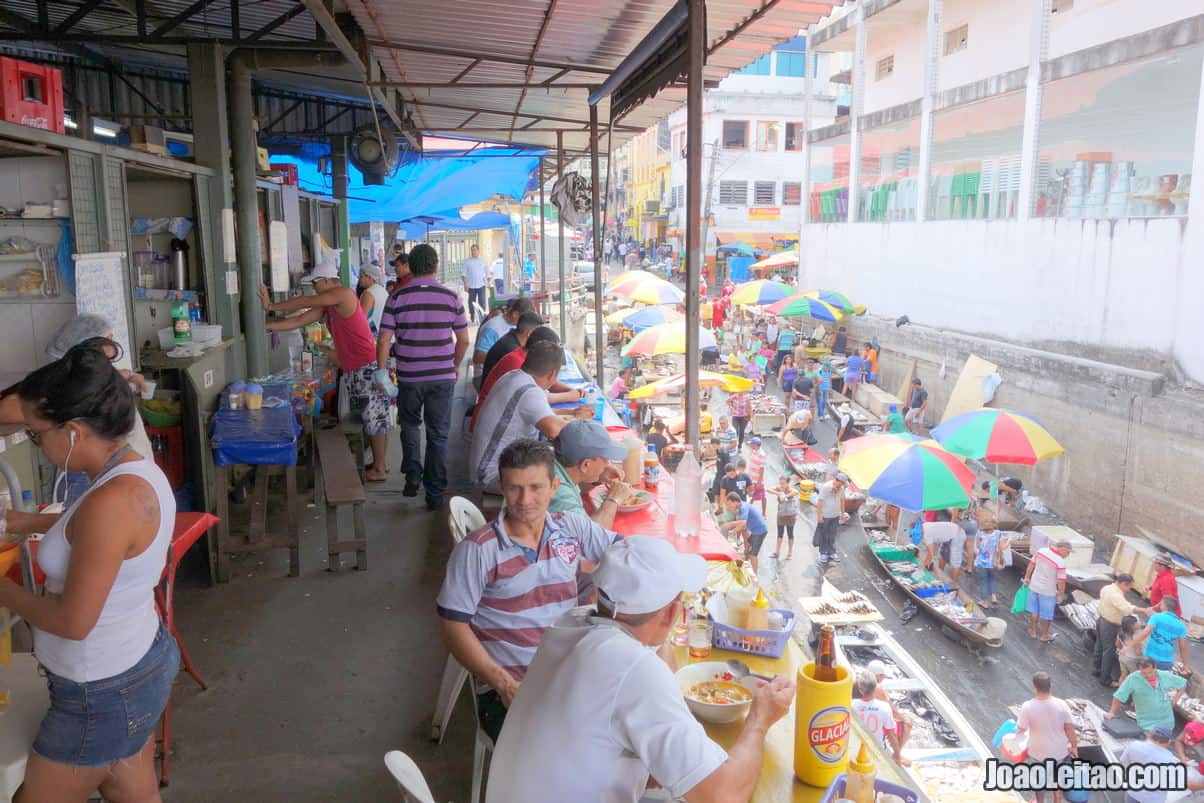
This Art Nouveau market was built between 1880 and 1883, inspired by the style of the famous Les Halles in Paris, from where the metallic structures were imported. It was the second modern market in Brazil, made possible by the economic boom of the rubber industry in Manaus.
Nowadays, it doesn’t have the same purpose as the old market, and you’ll find mostly souvenir shops inside. However, there’s a fish market in a building next door. The building was rented to the British company Manáos Markets between 1906 and 1934. It was recently restored, and you can see some interesting panels inside that tell the detailed History of this building.
6. Port of Manaus
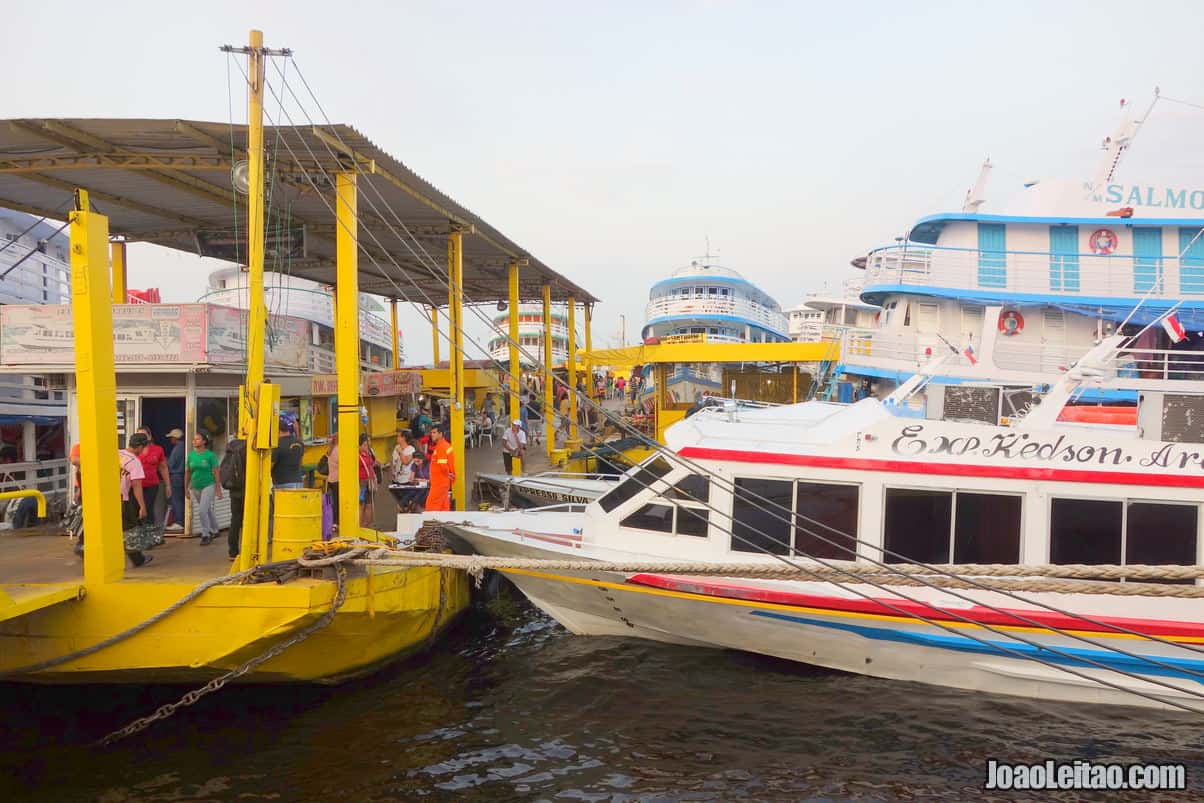
The Port of Manaus has been a UNESCO World Heritage Site since 1987. It has several buildings including the Ilha de São Vicente, the main office building, the Port Museum, the building of Public Treasury, the customs house, several warehouses, floating docks, and a few other minor buildings.
As with many other historical parts of Manaus, the port is connected to the city’s golden age of the rubber industry, between the late 19th century and the beginning of the First World War (1914). Most of the port was built after 1900, by British company Manaos Harbour Limited that managed it until the 1960s.
7. Manaus Customs House
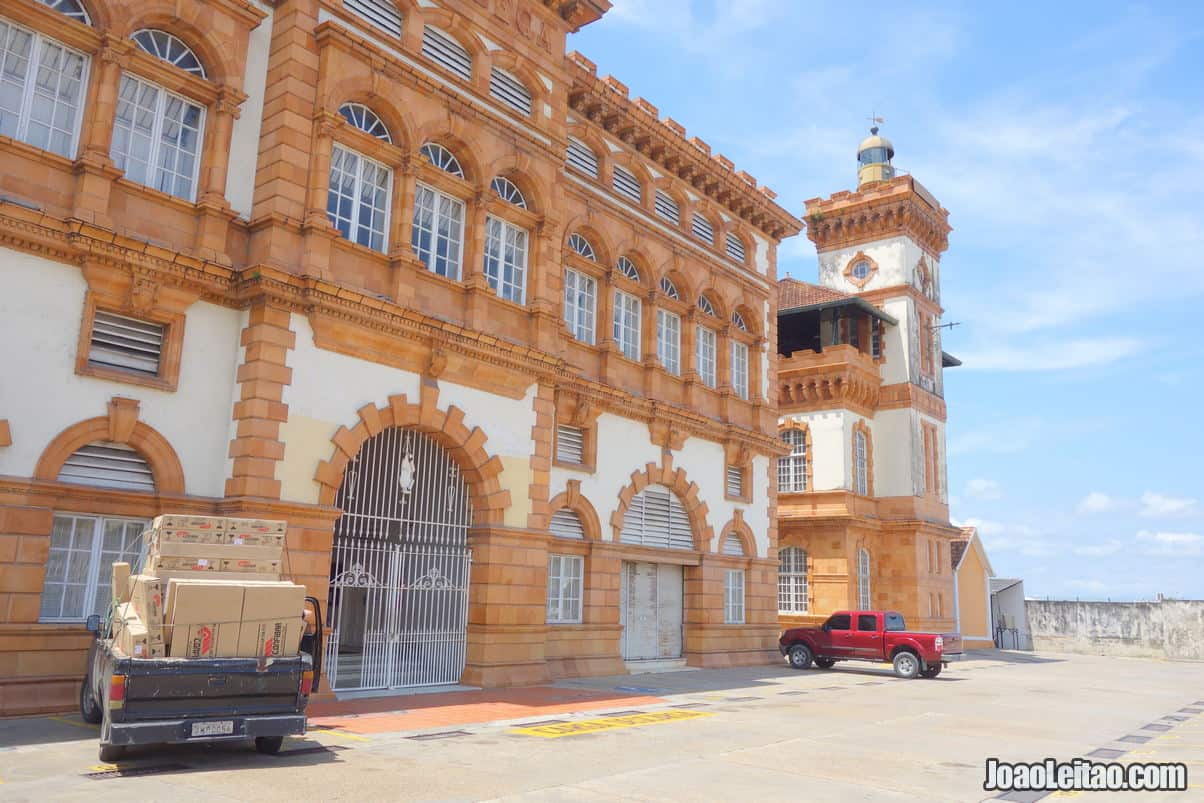
The Manaus Customs House is by the port and was established in 1906, although it was only officially inaugurated in 1919. It’s an eclectic building with medieval and Renaissance influences, designed by a team of three architects: Edmund Fisher, H.M. Fletcher, and G. Pinkerton.
It was built with blocks prefabricated in England, with materials prepared to endure the weather in Manaus, which might explain why the building maintains its original color. The “Guardamoria” was built near the Customs House.
This building houses the police officers in charge of inspecting the ships arriving in Manaus.
8. Metropolitan Cathedral of Manaus
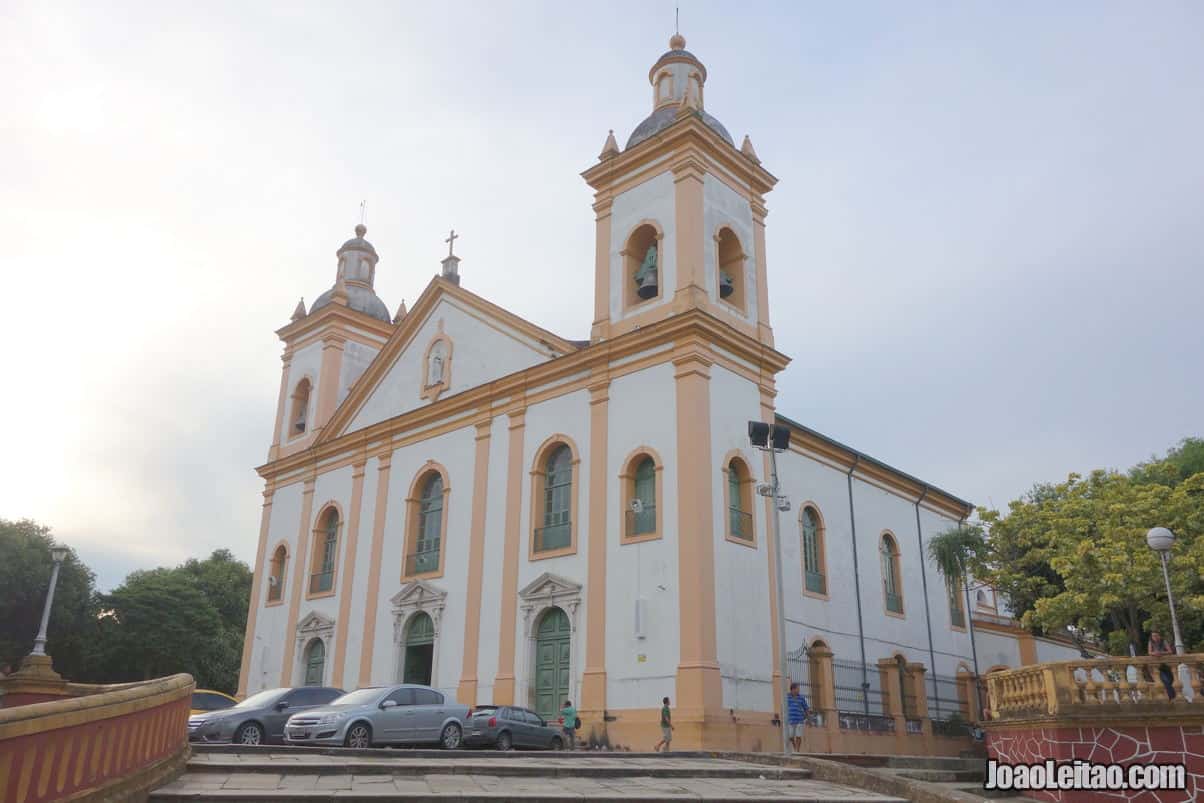
The Metropolitan Cathedral of Manaus is the city’s main church that dates back to 1695, on the same location where the Carmelites missionaries built the first one. That first temple was rebuilt entirely when Manoel da Gama Lobo D’Almada was the province’s president, but a violent fire destroyed the church in 1850.
The new church began construction eight years later, designed by military architect Sebastião José Basílio Pyrrho and supervised by mason Francisco Caneja. The church was inaugurated almost 20 years later, in 1877, and included a lot of the assets saved from the previous fire. It became a cathedral in 1892 when the diocese of Manaus was established.
The church was restored in 1916, and the interior décor was renovated in 1945 with oil paintings and religious symbols.
9. Largo de São Sebastião (São Sebastião Square)
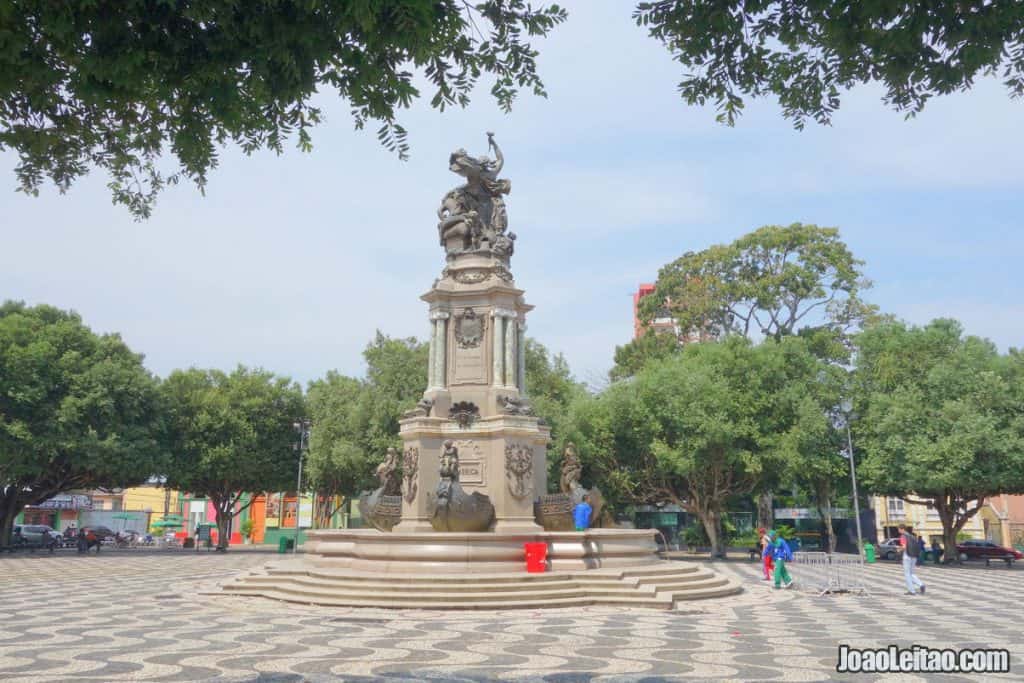
Largo de São Sebastião (São Sebastião Square) is the meeting point of Manaus’ historic center where you’ll find some of the city’s iconic buildings like the São Sebastião Church, the Palace of Justice that’s currently a cultural center, and the Amazon Theater.
The Monument Abertura dos Portos is the highlight at the center of the square. In addition to the museums and art galleries you can see here, you can’t miss visiting the Ivete Ibiapina Music House, the House of the Arts, and the Gallery of Arts housed in a beautiful palace and open for free between 6:00 and 9:00 pm.
While you visit Manaus, São Sebastião Square is the perfect place for a meal or having a beer at one of the many esplanades. The square is also a venue for recurring events like the annual opera festival that attracts over 10,000 people to the square.
Also read my page:
The Tatuyo – Incredible life of a surviving Amazon Brazilian tribe

